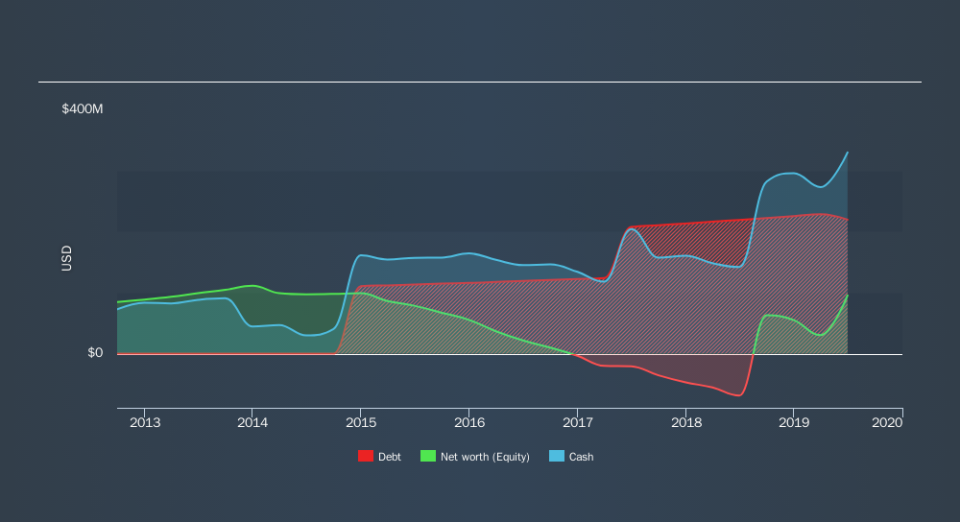Health Check: How Prudently Does PROS Holdings (NYSE:PRO) Use Debt?

David Iben put it well when he said, 'Volatility is not a risk we care about. What we care about is avoiding the permanent loss of capital.' So it seems the smart money knows that debt - which is usually involved in bankruptcies - is a very important factor, when you assess how risky a company is. We note that PROS Holdings, Inc. (NYSE:PRO) does have debt on its balance sheet. But should shareholders be worried about its use of debt?
When Is Debt Dangerous?
Debt and other liabilities become risky for a business when it cannot easily fulfill those obligations, either with free cash flow or by raising capital at an attractive price. Ultimately, if the company can't fulfill its legal obligations to repay debt, shareholders could walk away with nothing. However, a more frequent (but still costly) occurrence is where a company must issue shares at bargain-basement prices, permanently diluting shareholders, just to shore up its balance sheet. Of course, the upside of debt is that it often represents cheap capital, especially when it replaces dilution in a company with the ability to reinvest at high rates of return. When we examine debt levels, we first consider both cash and debt levels, together.
Check out our latest analysis for PROS Holdings
What Is PROS Holdings's Net Debt?
The chart below, which you can click on for greater detail, shows that PROS Holdings had US$219.5m in debt in June 2019; about the same as the year before. However, its balance sheet shows it holds US$329.6m in cash, so it actually has US$110.0m net cash.
A Look At PROS Holdings's Liabilities
According to the last reported balance sheet, PROS Holdings had liabilities of US$179.0m due within 12 months, and liabilities of US$233.4m due beyond 12 months. Offsetting these obligations, it had cash of US$329.6m as well as receivables valued at US$53.1m due within 12 months. So its liabilities outweigh the sum of its cash and (near-term) receivables by US$29.8m.
Having regard to PROS Holdings's size, it seems that its liquid assets are well balanced with its total liabilities. So it's very unlikely that the US$2.53b company is short on cash, but still worth keeping an eye on the balance sheet. While it does have liabilities worth noting, PROS Holdings also has more cash than debt, so we're pretty confident it can manage its debt safely. The balance sheet is clearly the area to focus on when you are analysing debt. But ultimately the future profitability of the business will decide if PROS Holdings can strengthen its balance sheet over time. So if you're focused on the future you can check out this free report showing analyst profit forecasts.
In the last year PROS Holdings managed to grow its revenue by 21%, to US$222m. Shareholders probably have their fingers crossed that it can grow its way to profits.
So How Risky Is PROS Holdings?
Statistically speaking companies that lose money are riskier than those that make money. And in the last year PROS Holdings had negative earnings before interest and tax (EBIT), truth be told. And over the same period it saw negative free cash outflow of US$3.4m and booked a US$63m accounting loss. But the saving grace is the US$330m on the balance sheet. That kitty means the company can keep spending for growth for at least five years, at current rates. With very solid revenue growth in the last year, PROS Holdings may be on a path to profitability. By investing before those profits, shareholders take on more risk in the hope of bigger rewards. For riskier companies like PROS Holdings I always like to keep an eye on whether insiders are buying or selling. So click here if you want to find out for yourself.
Of course, if you're the type of investor who prefers buying stocks without the burden of debt, then don't hesitate to discover our exclusive list of net cash growth stocks, today.
We aim to bring you long-term focused research analysis driven by fundamental data. Note that our analysis may not factor in the latest price-sensitive company announcements or qualitative material.
If you spot an error that warrants correction, please contact the editor at editorial-team@simplywallst.com. This article by Simply Wall St is general in nature. It does not constitute a recommendation to buy or sell any stock, and does not take account of your objectives, or your financial situation. Simply Wall St has no position in the stocks mentioned. Thank you for reading.

 Yahoo Movies
Yahoo Movies 

